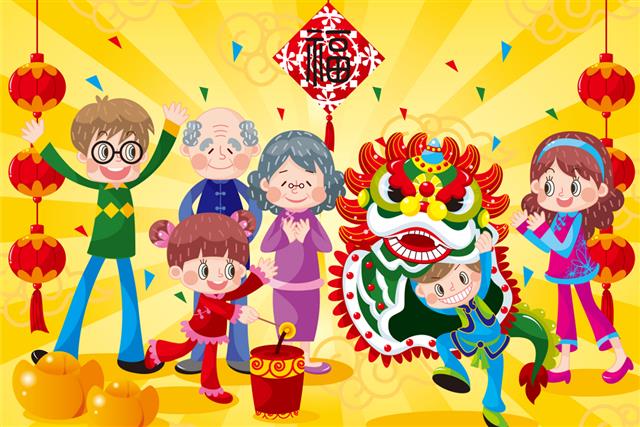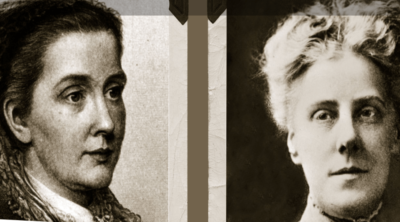
When is the Chinese New Year in 2018? You will be surprised to know that the Chinese new year falls on a different date every year. Want to know why? This article has all the answers.
Did you know?
The last year of the Dog was in 2006
Also called the Agricultural New Year, Agrarian Calendar’s New Year, Lunar New Year, and the Spring Festival, the Chinese New Year is celebrated with much felicitation every year usually on the second New Moon after the Winter Solstice, or rather on the New Moon closest to the spring season (Lìchūn).
Although the Chinese New Year is always celebrated after the harvesting is completed in the fall season, and before the plantation starts during spring, its dates keep on changing year after year. The main reason behind this shift is that in the Chinese lunisolar calendar, once every three years an extra month is added!
This is basically done to align the lunar cycle and the solar cycle on which the Chinese calendar is based. Chinese leap years have 13 months in them, and they do not necessarily correspond with the Gregorian leap years. So obviously, the new year dates change too!
The New Year Day has immense significance in the Chinese culture. It has a history of more than four hundred years behind it, and there are hordes of Chinese traditions, customs, and rituals associated with it. The date always falls somewhere between January 21 to February 20 every year.
2018 – Year of the Earth Dog
February 16 will start a new year, and it is the year of the Dog. Each zodiac sign is associated with one of the five elements: Gold, Wood, Water, Fire, or Earth, which means that a Wood Dog or a Fire Dog comes once in a 60-year cycle.
It is believed that a person’s characteristics are decided by their birth year’s zodiac animal sign and element. As per the Chinese astrology, the year 2018 will be a year of great enthusiasm. You will feel ecstatic but dim, gleeful but exhausted at the same time.
Personality of a Dog
The dog is a loyal, and a compassionate animal. Dogs are pessimistic in nature, and they procrastinate in the worst situations. They have highly intuitive personalities and their judgment of people is almost never wrong.
Dogs are short tempered. They should learn to be patient. Dogs have strong moral values, and they don’t like to compromise on them. They are very brave, courageous, and take responsibility of things they do.
Customs and Celebrations
春節 The Chinese New Year is the time when the ancestors are remembered and paid respect to.
春節 People start by thoroughly cleaning their houses. Every nook and cranny is cleaned with gusto, for they believe that good spirits and positivity can only dwell in the household if it is spotless.
春節 Chinese New Year is the time when the entire family gets together and celebrates. The houses are decorated with flowers, fruits, red Chinese lanterns, floats, etc. Beautiful red couplets on the door frames and lanterns brighten the atmosphere. Red is the most widely used color for decorations because it signifies fire – the only element that can keep all evil and negativity at bay. Bright flamboyant colors like orange, golden, and yellow are also used. Elaborate parades – attended by thousands every year – are organized with dancers, decorations, and life-sized dragons.
春節 Food plays a very vital role in the New Year celebrations. Making dumplings called jiǎo zi and consuming them with family on New Year’s Eve (before dinner) is believed to bring luck and fortune. These dumplings are generally made with ground meat and veggies. Shaped like small metallic ingots called Yuanbao (used in ancient China as currency), these dumplings symbolize the welcoming of wealth and prosperity. Sometimes, a tiny coin is hidden in one of the jiǎo zi, and whoever finds it while eating is believed to be blessed by Cáishén – the God of Wealth – and will be reaping material comforts of life throughout the year.
春節 The tuán nián or wéilú is the New Year Eve reunion dinner which is generally hosted by the parents or the oldest sibling of a family. This dinner is usually preceded by revering the ancestors of the family, which begins around 11 pm.
春節 Food is the representative of prosperity and longevity among the Chinese. It is, therefore, that whole fish (generally served as the last course, believed to symbolize monetary surpluses), whole chicken with its feet, head, and tail (symbolic of unity and completeness of a happy family) and pork (symbolic of strength, riches, and plenteous blessings) are served during wéilú. Also, very long strands of noodles (e.g., dried and unbroken glass noodles or fat choy) are cooked. The longer the strands, the more the number of years it adds to every member’s life span.
春節 In Malaysia, yúshēng is served as the first course of the dinner. Also known as lo hei and literally translating to ‘prosperity toss’, it is basically a Teochew-style raw fish salad which comprises:
- Raw fish strips (traditionally: mackerel/raw wolf herring; commonly: salmon, abalone slices, and sliced salmon sashimi can also be used)
- Fruits (e.g., pomelo, lime, cucumber, sun-dried oranges)
- Oil (e.g., extra virgin olive oil, sesame oil)
- Shredded veggies (e.g., carrot, white/green radish, Chinese parsley, capsicum, turnips, red/green yam, red pickled ginger, key lime leaves)
- Condiments (e.g., plum sauce, kumquat paste)
- Rice vinegar
- Roasted peanuts
- Spices and flavoring agents (e.g., chili, toasted sesame seeds, Chinese five-spice powder, cinnamon powder, Chinese white ground pepper) among other things.
- Square deep-fried flour crisps (e.g., Chinese shrimp crackers, pok choy crackers)
- Jellyfish (optional)
This dish with mostly 27 different ingredients is associated with abundance, so every member of the family is expected to toss it with chopsticks while making happy noises of laughter and uttering auspicious wishes. The mixing of the salad ingredients begins with chants like Gong Xi Fa Cai meaning “Congratulations for your wealth” and Wan Shi Ru Yimeaning “May all your wishes be fulfilled”.
When adding the fish: Nian Nian You Yu meaning “Abundance throughout the year”.
When adding the fruits: Da Ji Da Li meaning “Good luck and smooth sailing”.
When sprinkling the pepper: Zhao Cai Jin Bao meaning “Attract riches and treasures”.
When the oil is poured encircling the other components: Cai Yuan Guang Jin meaning “Numerous sources of wealth” and Yi Ben Wan Li meaning “May your profit be 10,000 times the capital”.
When adding the carrots: Hong Yun Dang Tou meaning “Good luck is drawing near”.
Then the green radish: Qing Chun Chang Zhu meaning “Forever young”.
Next, the white radish: Bu Bu Gao Sheng meaning “Reaching a higher level with every step” and Feng Sheng Shui Qi meaning “Progress at a fast pace”.
This is followed by the addition of condiments.
When dusting the roasted and broken peanuts: Jin Yin Man Wu meaning “Household filled with gold and silver”.
Sesame seeds: Sheng Yi Xing Long meaning “Prosperity in business”.
And finally the pok choy crackers: Man Di Huang Jin meaning “Floor covered with gold”.
The higher the salad is tossed the greater will be the growth in familial fortunes.
春節 Post the reunion dinner, every member of the family is expected to stay awake and revel in each other’s company. This is called shǒusuì. It is believed to lengthen everyone’s lifespan, especially that of the elderly.
春節 Another customary ritual is to make the sweet sticky glutinous rice flour Chinese fruitcake called Niángāo. The name of this cake is a homonym for the word ‘higher year’, and thus signifies the ushering in of greater fortunes throughout the year. Also, it is specifically made to please the Chinese deity of the kitchen, who is believed to pay his annual visit to his heavenly abode every New Year’s Day, and present a tally of the good and bad behavior of every family. So, the better the cake tastes, the more favorable is his account of a particular family. Niángāo is also gifted to friends, family, and neighbors as a New Year’s gift.
春節 A completely vegetarian dish called Buddha’s delight or Luóhàn zhāi is commonly consumed by Buddhist monks during the first five days of the Chinese New Year. It is usually done to observe the Buddhist tradition of not killing any living being during the auspicious season of the Spring Festival. It is like beginning nothing with bloodshed. Here is a list of ingredients usually opted for, when cooking this dish.
Commonly Used Ingredients
- Arrowhead
- Bamboo fungus
- Bamboo shoots
- Bean curd sticks
- Black mushrooms
- Carrot
- Cellophane noodles
- Daylily buds
- Fat choy
- Ginkgo nuts
- Lotus seeds
- Napa cabbage
- Peanuts
- Snow peas
- Tofu (fried)
- Water chestnuts
- Wheat gluten (braised or fried)
- Wood ear Flavorings
- Chinese cooking wine
- Garlic
- Ginger
- Monosodium glutamate
- Oil (preferably peanut)
- Oyster sauce
- Pickled tofu
- Salt
- Soy sauce
- Starch
- Sugar
Optional Ingredients
- Baby corn
- Bean sprouts
- Bracken fern tips
- Bok choy
- Cauliflower
- Chinese celery
- Cornflower buds
- Types of fungus, such as:
- Cloud ear fungus
- Elm ear fungus
- Yellow fungus
- Osmanthus ear fungus
- Snow fungus
- Laminaria
- Lotus root
- Types of mushrooms, like:
- Straw mushrooms
- Oyster mushrooms
- Tricholoma mushrooms
- Potato
- Red jujubes
Occasional Non-veg Additions
When Luóhàn zhāi is prepared at home with the sentiment to keep the tradition alive, people sometimes deviate, and add a few non-vegetarian items to it simply because these items signify prosperity, unity, and good fortune to them.
- Dried oysters
- Quail eggs
- Shrimp
春節 Square daikon cakes made of shredded radish are often made during the New Year, for they are symbols of fortune and well-being. And sometimes items such as Jinhua ham, Chinese sausage, dried Shitake, and dried shrimp are added to it in order to give it that umami (savory) taste.
春節 Traditionally, the celebrations used to last for fifteen days. However, now the celebrations are limited to less than a week due to time constraints and work commitments.
春節 Gifts are generously exchanged among family and friends. Mostly fruits like oranges, live orange trees, and lychee nut, and other dry fruit-filled harmony trays are given to each other as a token of love and blessing for good fortune. In Malaysia, red envelopes filled with money (ang-poh) are given to children and single adults by the elderly in the family. The same tradition is prevalent in China as well, where sweets and currency notes are left under their pillows in red envelopes.
春節 Positivity, good health, happiness, wealth, and longevity are wished upon one’s loved ones during this time of the year. Chinese New Year celebrations today are no longer limited to China. Wherever the Chinese have migrated, be it to the United States or the United Kingdom or Australia or India, they have carried the cheer and festivities associated with it, with them. Besides China, it is a big festival in many other Asian countries, such as Hong Kong, Indonesia, Japan, Korea, Macau, Malaysia, Mauritius, Philippines, Singapore, Taiwan, Thailand, Tibet among others.

















